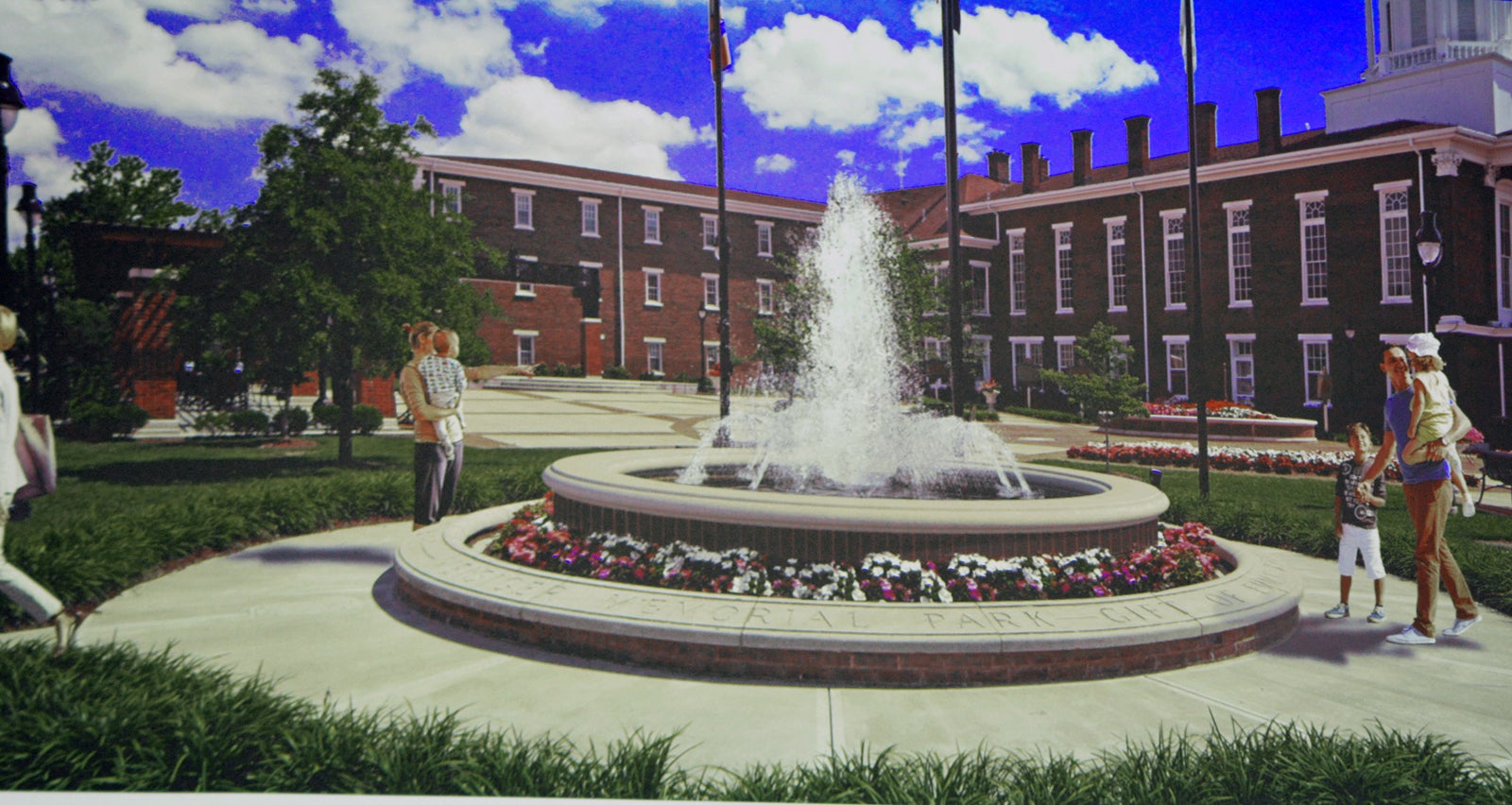Commissioner apologizes for not commenting on $100K fountain estimate
Published 6:02 pm Tuesday, February 11, 2020

- A rendering by Brandstetter Carroll shows what the firm says the upgraded design to the Weisiger Park fountain will provide in effects. The firm provided a free-of-charge redesign of the fountain, due to its "underwhelming" performance, but now the city will need to pay for the work required to achieve it, which could cost upwards of $100,000.
Danville Commissioner Rick Serres acknowledged Monday that “we caused quite a stir talking about our fountain at Weisiger.”
The stir was caused by the theoretical price tag of $100,000 for upgrading the fountain, based on new design plans from architectural firm Brandstetter Carroll given to the city last month.
Serres said he wanted to clarify the situation and reiterated the history behind the Weisiger Park fountain — how some local citizens wanted to put money in to help pay for a new one that would work as many had expected the current fountain would.
“I don’t think anyone here wanted to take that money, but we wanted to take a look at it,” Serres said. He said it was “nice of Brandstetter Carroll” to produce the new design — then corrected himself that “it was really expected of them” to provide the redesign at no fee.
The architectural firm designed the current fountain, which city officials and members of the public have not been satisfied with since its installation.
“They did that gratis, as far as I know, unless something happened that I didn’t know about,” Serres said. “So we appreciate that. Then, that number got thrown out there that got everybody stirred up. It was that $100,000 number.”
During a January city commission meeting, Monica Sumner with Brandstetter Carrolll said the firm estimated if the city were to bid the work out, “it would be in the neighborhood of $120,000 to $150,000,” but she also said Municipal Utility Engineer Earl Coffee told her the city could do the work in house “for less than $100,000.”
Serres apologized that the commission, during that meeting, did not comment on any price estimates.
“We up here did not say too much about it, and I apologize for that. I think we wanted to see what the real number would be, before we made any decisions. Am I correct on that?” Serres asked the other commissioners, who all agreed.
“I just wanted to make that statement, because it caused quite a stir. And that’s OK — I’m alright with that. But this is where we’re coming from up here.”
Coffey said that at the January meeting, staff was only requesting feedback on the concept or design.
“We have not developed cost yet. The architects’ estimate can be a hit or miss — sometimes it’s high and other times it’s low,” Coffey said. “Our plan was if the commission liked the new concept, to identify the most cost-effective way to accomplish the work and source of funds.”
He said once that’s done, “then we can provide the information to the commission for their direction.”
CVB year-end report
Also during Monday’s meeting, Jennifer Kirchner, director of the Convention and Visitors Bureau, shared some data points for CVB finances and activity during 2019.
The CVB has continued to see an increase in revenue year after year, Kirchner said. She presented graphs showing the total hotel room tax increasing from $171,600 in 2013-14 to $227,000 in 2018-19.
Kirchner said in addition to the room tax revenue, the CVB has worked to build partnerships in the community through securing grants and private funding for investment into projects and infrastructure. She said this can be seen in its efforts to grow the outdoor recreation economy through the county-wide trail system.
“We are approaching nearly $750,000 in outside funds invested in Boyle County since 2013,” she said.
Now that Wilderness Trail has been included, Kirchner said Danville is now the 18th stop on the Kentucky Bourbon Trail. She asked the commission for any input and ideas as far as tying marketing in relating to the distilleries addition onto the list, and said the CVB has been working with the Chamber of Commerce to create a local campaign to get the community involved.
“The more people to tell our story, the more effective we’ll be,” Kirchner said. She said in 2019, 1.4 million people visited the Bourbon Trail; and 250,000 visited the Craft Bourbon Trail, which Wilderness Trail is already a part of.
Some challenges to hurdle, Kirchner said, include transportation barriers for visitors, “whether that means getting more Lyft or Uber drivers in, shuttles to hotels …”






